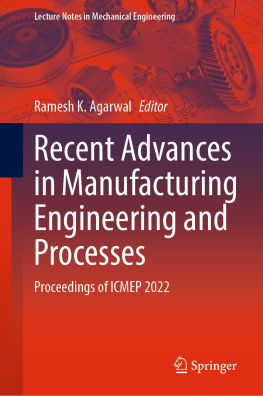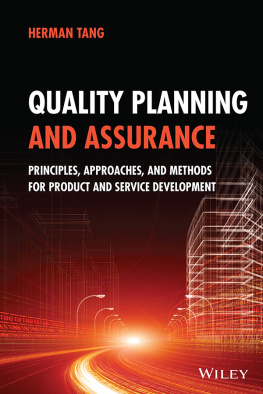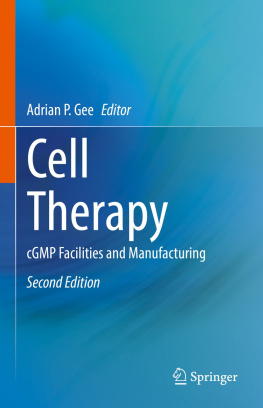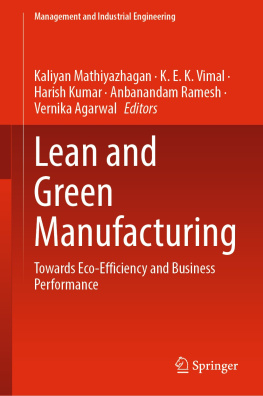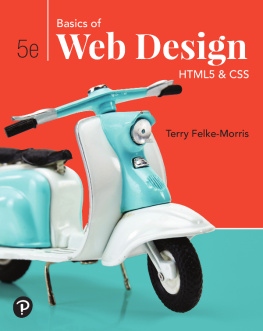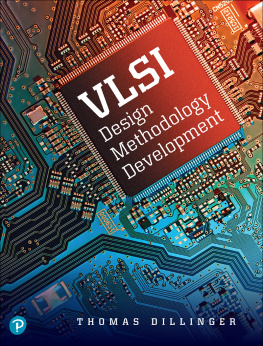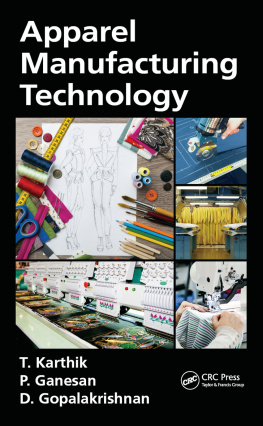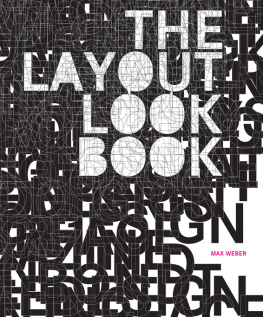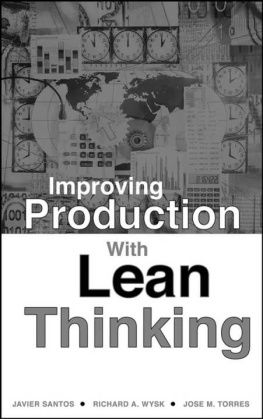Manufacturing
Facilities Design and
Material Handling
FIFTH EDITION
Matthew P. Stephens
Fred E. Meyers
Purdue University Press
West Lafayette, Indiana
Credits and acknowledgments borrowed from other sources and reproduced, with permission, in this textbook appear on appropriate page within text. Unless otherwise stated, all figures and tables belong to the authors.
Copyright2013 by Matthew P. Stephens. All rights reserved. Manufactured in the United States of America. This publication is protected by Copyright, and permission should be obtained from the publisher prior to any prohibited reproduction, storage in a retrieval system, or transmission in any form or by any means, electronic, mechanical, photocopying, recording, or likewise.
Many of the designations by manufacturers and sellers to distinguish their products are claimed as trademarks. Where those designations appear in this book, and the publisher was aware of a trademark claim, the designations have been printed in initial caps or all caps.
This book was previously published by: Pearson Education, Inc.
Cataloging-in-Publication data on file at the Library of Congress.
ISBN-13: 978-1-55753-650-1
ISBN-10: 1-55753-650-3
To my son Ethan
Preface
The fifth edition of Manufacturing Facilities Design and Material Handling embraces the same practical approach to facilities planning as the previous editions. Building on the same systematic approach, it expands upon an important and relevant topic of lean manufacturing. In addition to a rich collection of discussion questions and problems that follow each chapter, a comprehensive case study has been added. This case study is presented as an Appendix and clearly illustrates the step-by-step approach in facilities planning as explained in the textbook, leading to the development of a complete example of a facility design and layout.
Layout-iQ, a state-of-the-art facilities planning and simulation software package is introduced in this edition, and access to the software is included for purchasers of the book.
The goals of this project-oriented facilities design and material handling textbook are to provide students and practitioners with a practical resource that describes the techniques and procedures for developing an efficient facility layout, and to introduce some of the state-of-the-art tools such as computer simulation.
This how-to book leads the reader through the collection, analysis, and development of vital and relevant data to produce a functional plant layout. Our systematic and methodical approach allows the novice to follow along step-by-step. However, the textbook has been structured so that it may also be used easily and productively by more experienced planners and serve as a useful guide and reference.
The mathematical background and requirements have been intentionally kept at the level of high school algebra. Although quantitative analyses and the manipulation of numbers are extremely important for planning an efficient facility, these skills can be developed without confusing the process with obscure mathematical procedures.
Some experience with computers and computer-aided design (CAD) software packages will prove beneficial for the facilities planner and for other professionals in manufacturing and technology. Those techniques are discussed and emphasized.
On the average, a manufacturing facility will undergo some layout modification and change once every 18 months. Furthermore, the efficiency, productivity, and profitability of any given enterprise are directly correlated with the efficiency of the layout and the material handling systems. Thus, individuals with skills in this area are in demand and are well compensated.
The design of the facility and material handling systems starts with collecting data from various departments. of this information. The marketing department provides data on various customer requirements that determine production volume and various manufacturing capabilities. The product engineering department supplies engineering drawings and bills of materials, and assists with equipment requirement determination. Inventory and investment policies are determined according to management policies which in turn dictate space requirements, make or buy decisions, production start dates, and so on.
Among the most basic and fundamental data are principles of time and motion economy and time standards. On the basis of this information, machine and personnel requirements are calculated, assembly lines are balanced, and workload in manufacturing cells are leveled. introduces the reader to the concepts of motion and time study.
analyzes material flow to ensure proper placement of machines and departments to minimize costs. Seven techniques are discussed in the chapter, as well as the use of computer-aided flow design and analysis.
describes the activity relationship diagram. The importance of relationships among departments, people, offices, and services, and their effect on the layout is explored. The activity relationship leads to the creation of the dimensionless block diagram.
Space calculation and ergonomic considerations are major and significant aspects of facilities planning. covers office layout techniques and space requirements.
The dimensionless block diagram, which was developed in discusses various layout construction techniques.
Many other functions require space. Some of these areas need as much space as the production department. The stores and warehouse departments are good examples. Good analysis and knowledge of design criteria can save much space and promote efficiency of both personnel and equipment. Other functions and spaces such as receiving, shipping, lunchroom, restrooms, first-aid rooms, and offices need careful consideration by the facilities planner. The location and size of each activity can have an effect on the overall operational efficiency. Chapters 8, 9, and 12 are dedicated to these topics.
Material handling systems are discussed in Chapters 10 and 11. The reader is introduced to new and exciting material handling concepts and equipment. Application of automatic identification and data capture (AIDC) and ergonomic considerations are emphasized. The reader is encouraged to integrate material handling with other functions to increase productivity and efficiency.
discusses the concept of simulation and introduces the reader to various applications and the power of computer simulation in the facilities planning arena. Some state-of-the-art simulation software packages are introduced to the reader, and case studies are discussed. As stated earlier, access to Layout-iQ is provided for hands-on application and use of layout design software.
covers selling the layout through a project report and oral presentation, an important part of any project.
The resultant facility design is only as good as the data and the data analyses upon which the plan has been based. Probably no single factor affects the operational efficiency and safety of an enterprise more than its layout and material handling system.
Matthew P. Stephens
Fred E. Meyers
Acknowledgments
I would like to express my gratitude to the reviewers and the wonderful staff at Purdue University Press whose generous help, efforts, and guidance has made the fifth edition of the Manufacturing Facilities Design and Material Handling a reality. A very special note of gratitude goes to Mr. Nelson E. Lee and Rapid Modeling Corporation for generously and kindly providing the users of this edition with links to Layout-iQ, a state-of-the-art simulation and planning software. I would like to acknowledge and thank Manny Cuevas, Michael Thoma, Bryan Orozco, Jarrett Hullinger, and Ben Unger for their hard work and efforts in developing the S. S. Turbo Manufacturing case study. I would like to express a heartfelt thank-you to Mr. Shaharyar Masood for his tireless and invaluable assistance with the necessary research and development of this edition.



